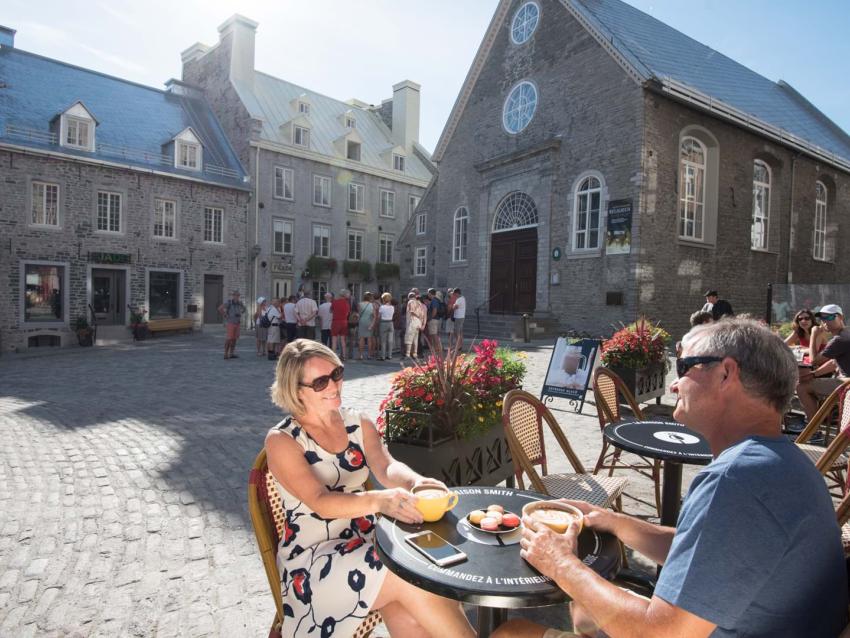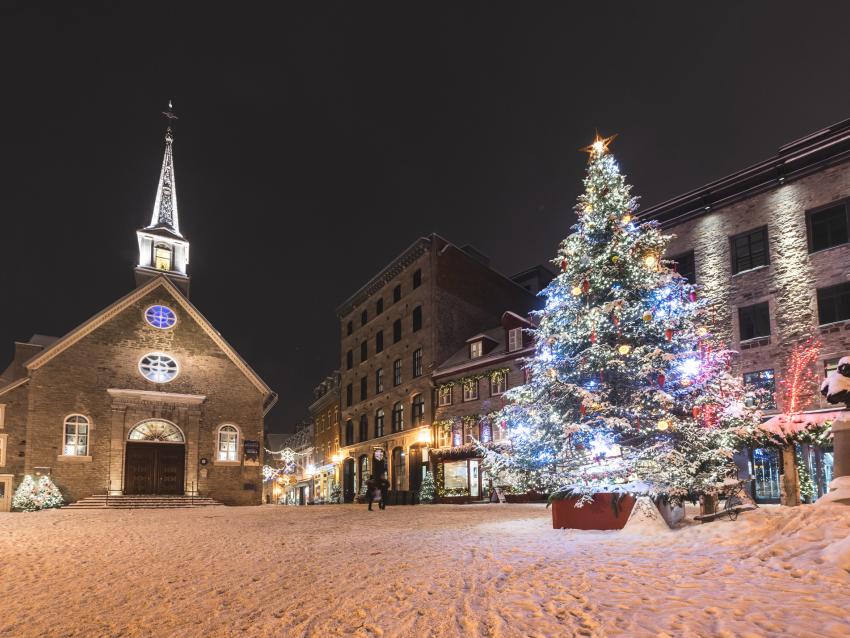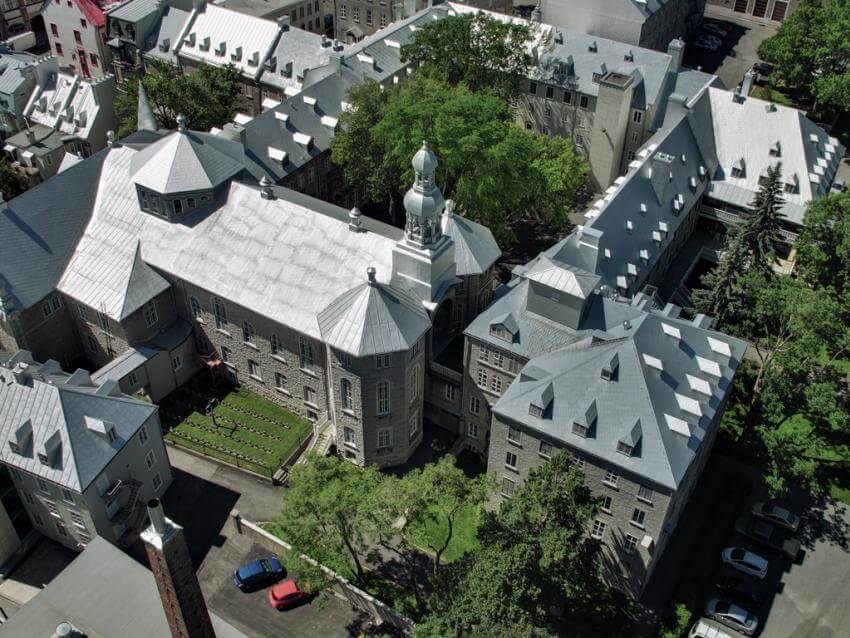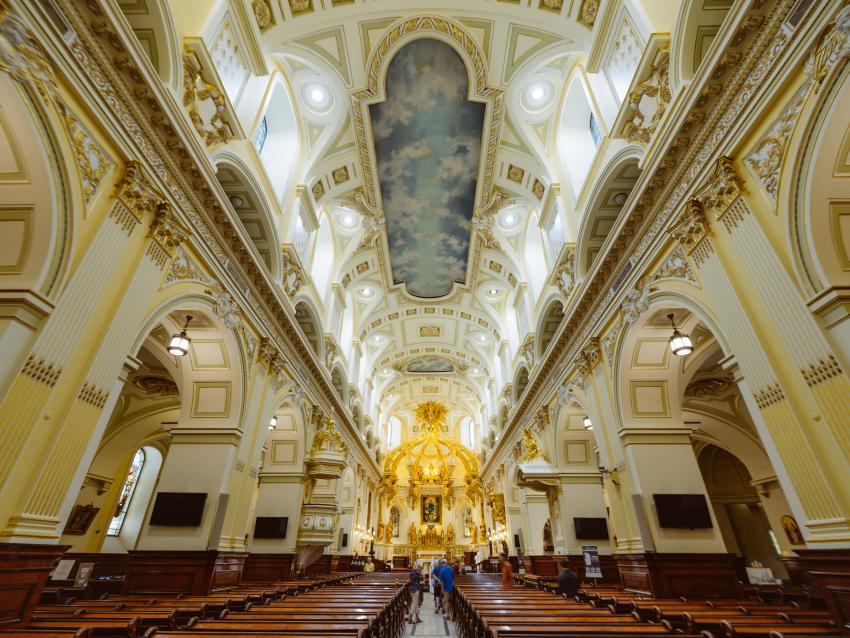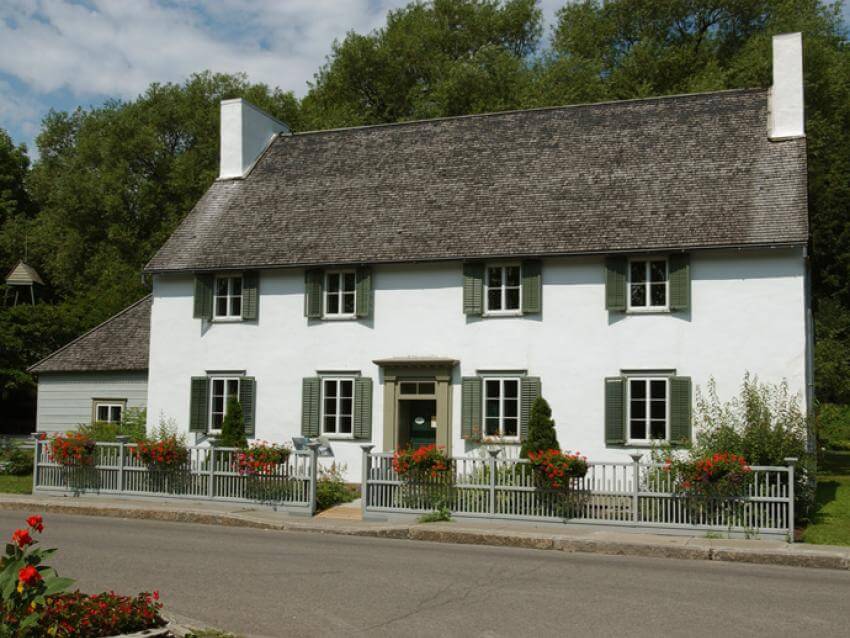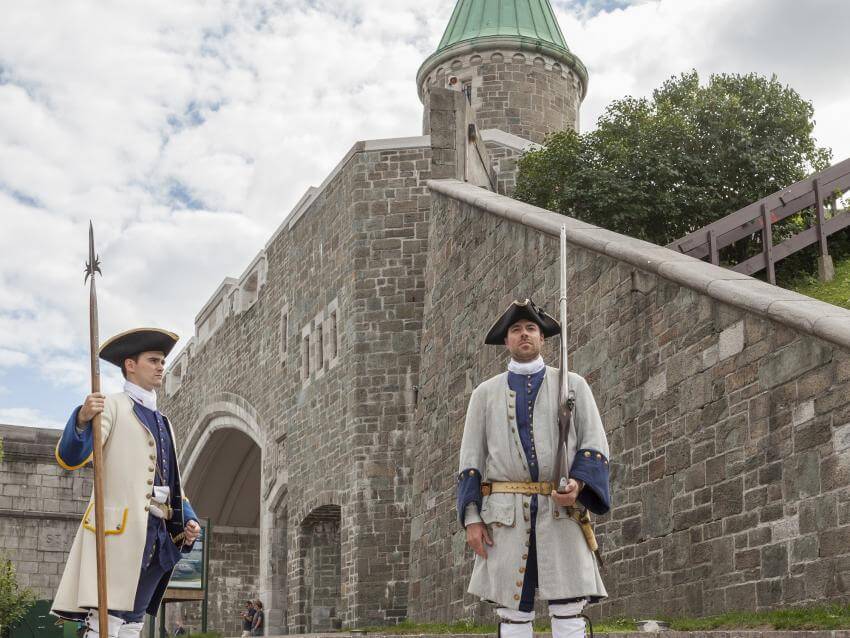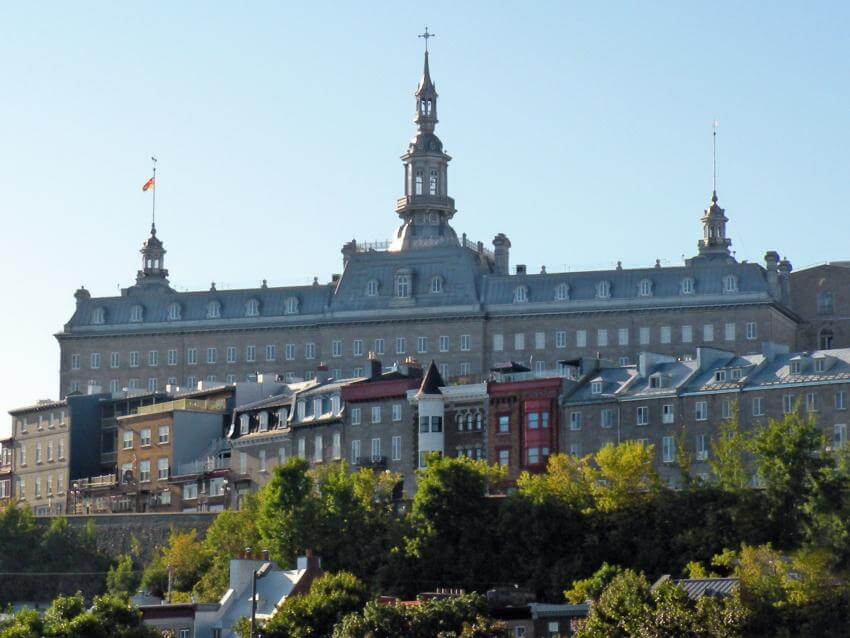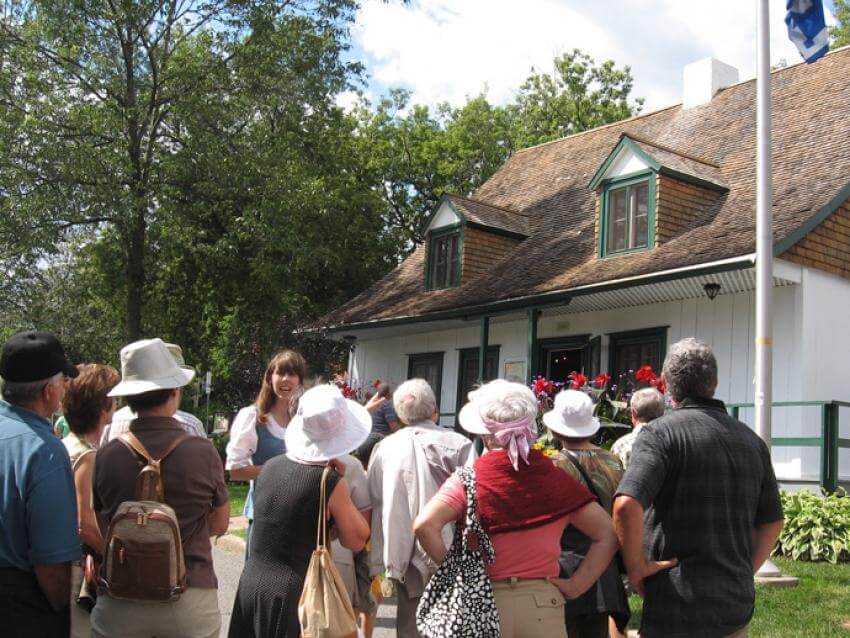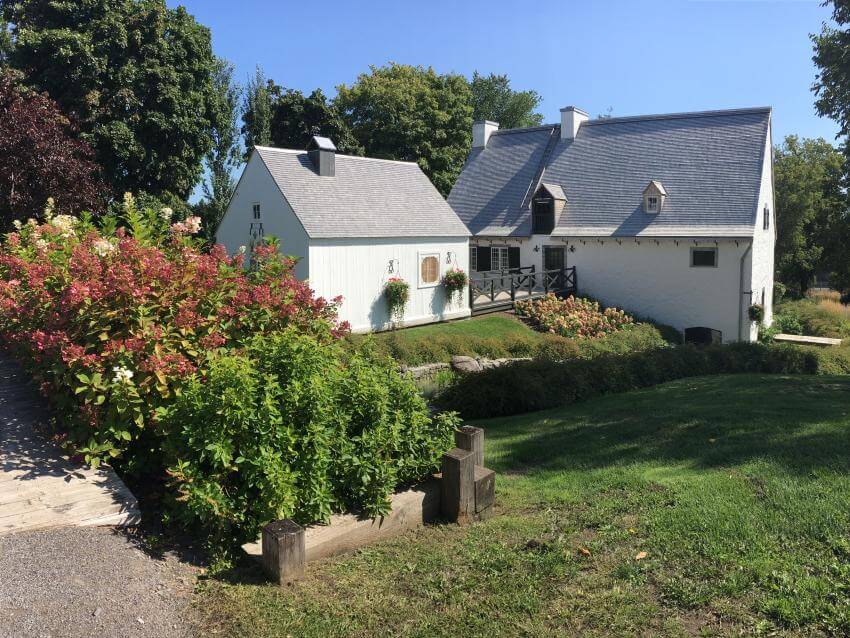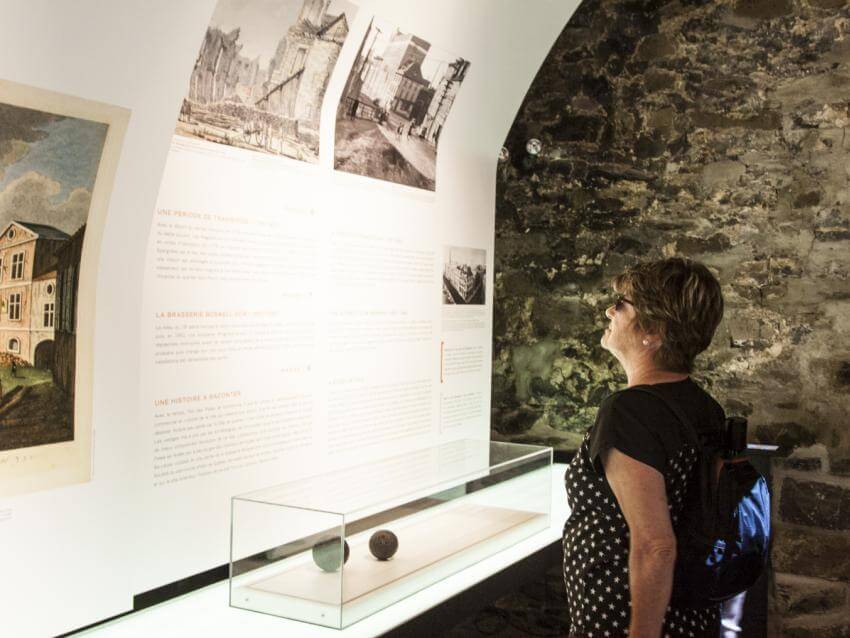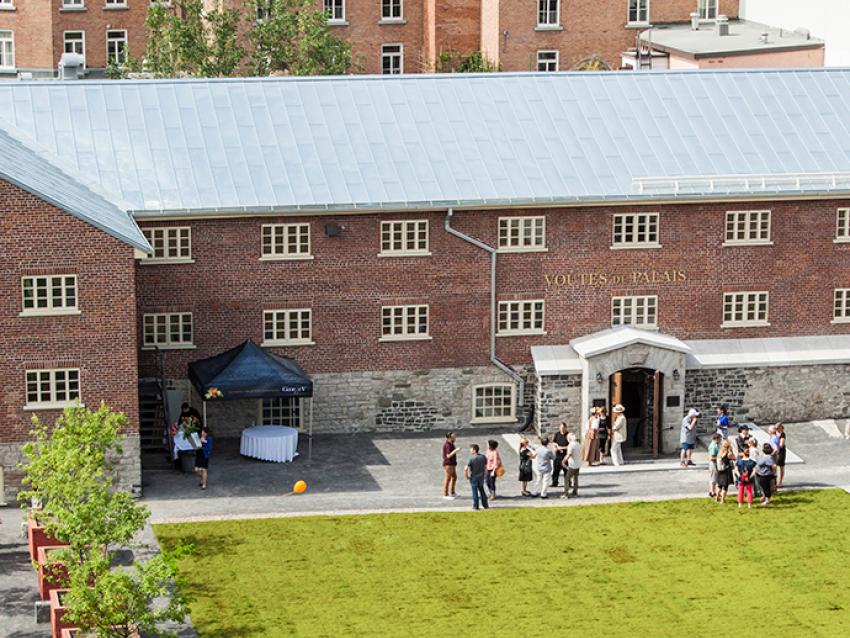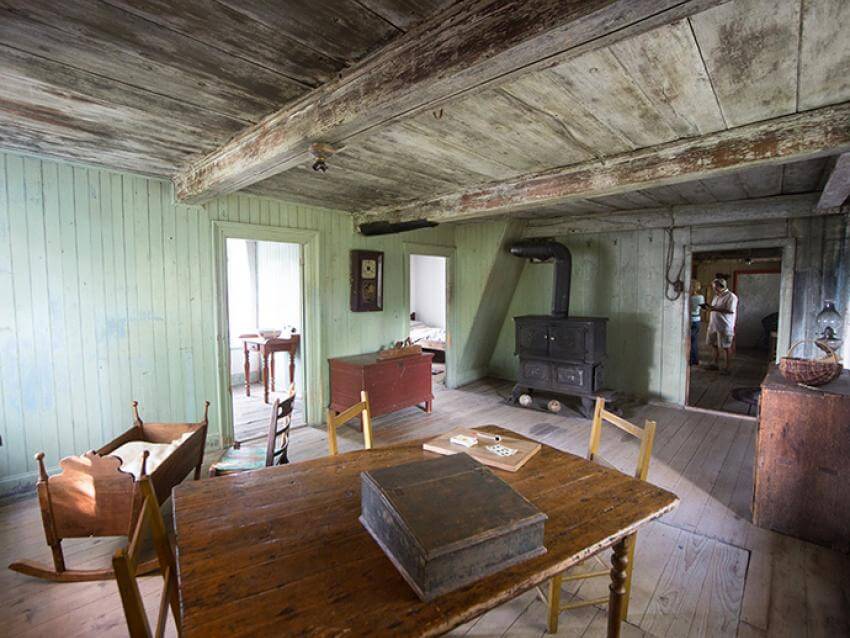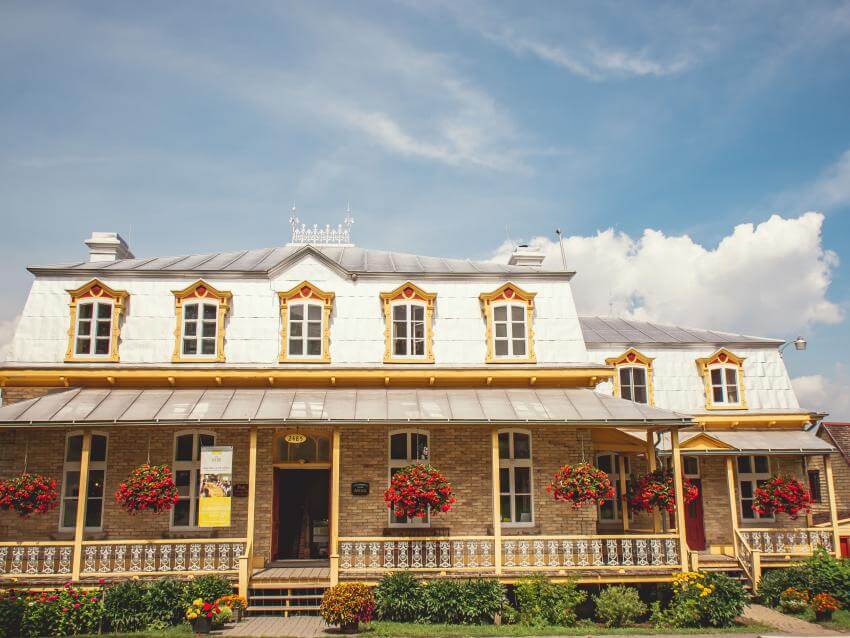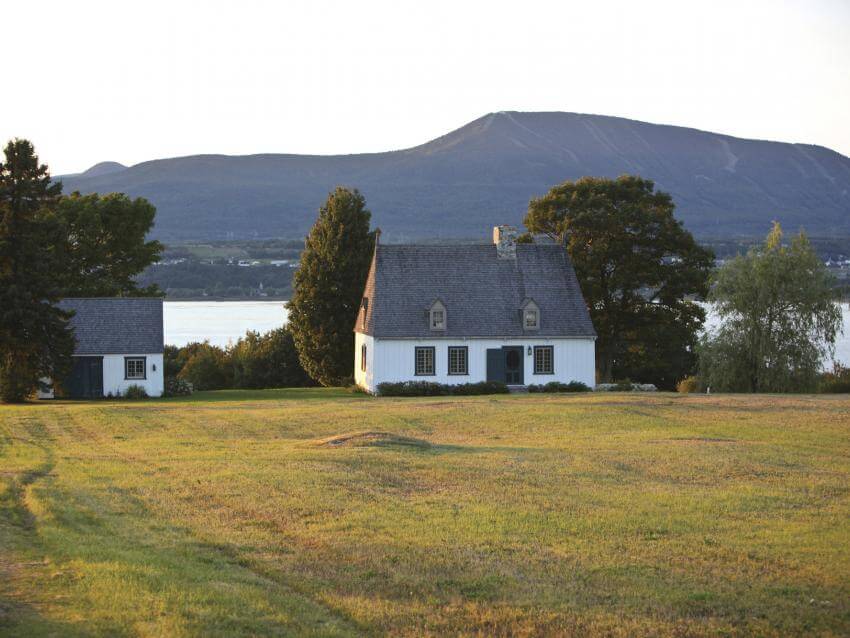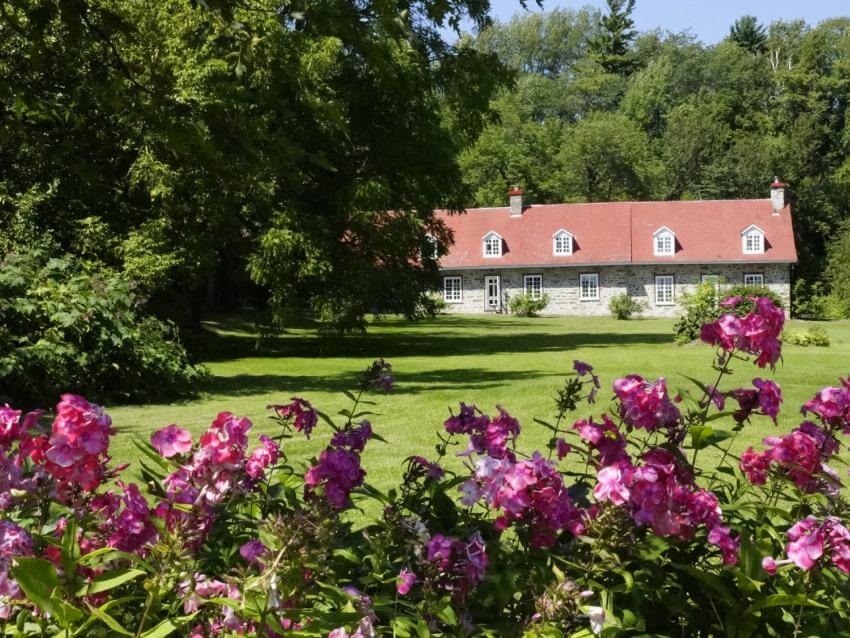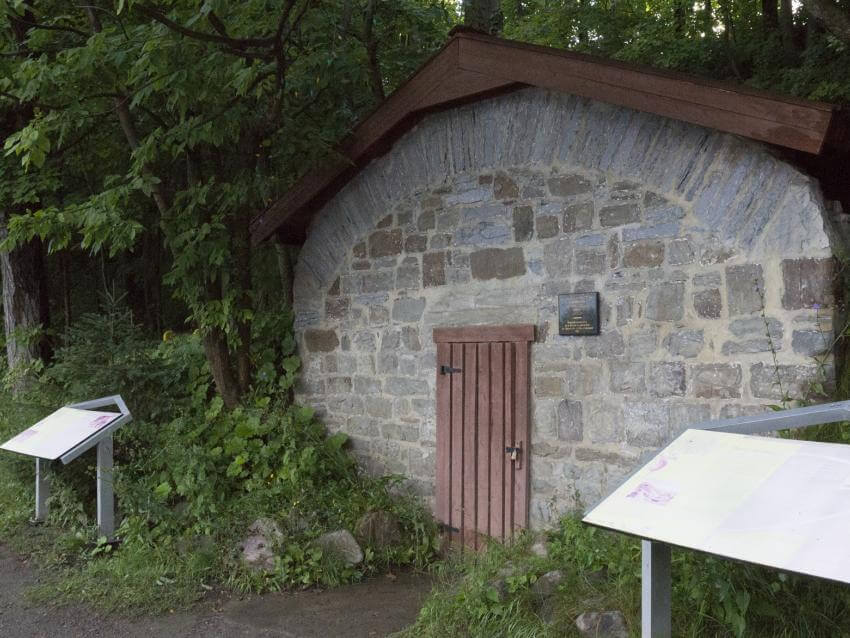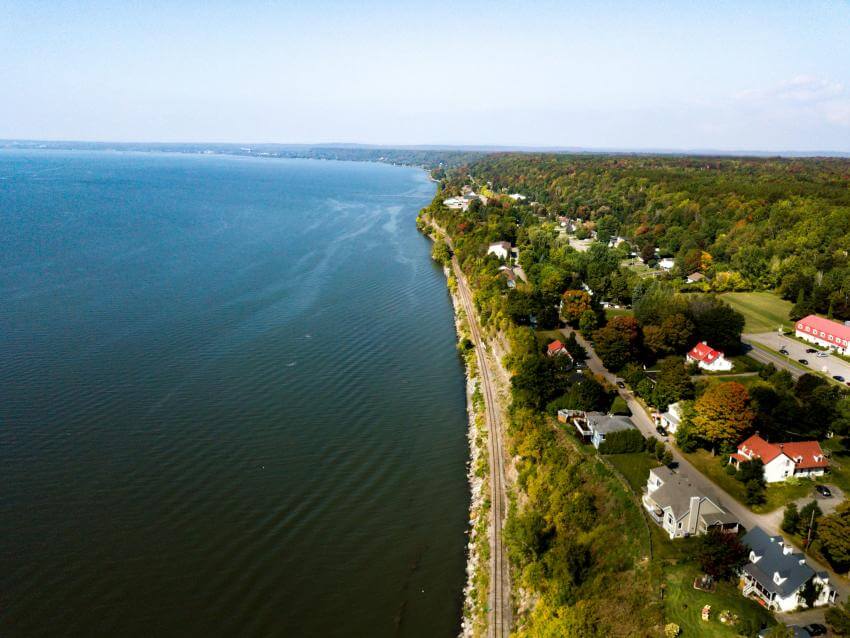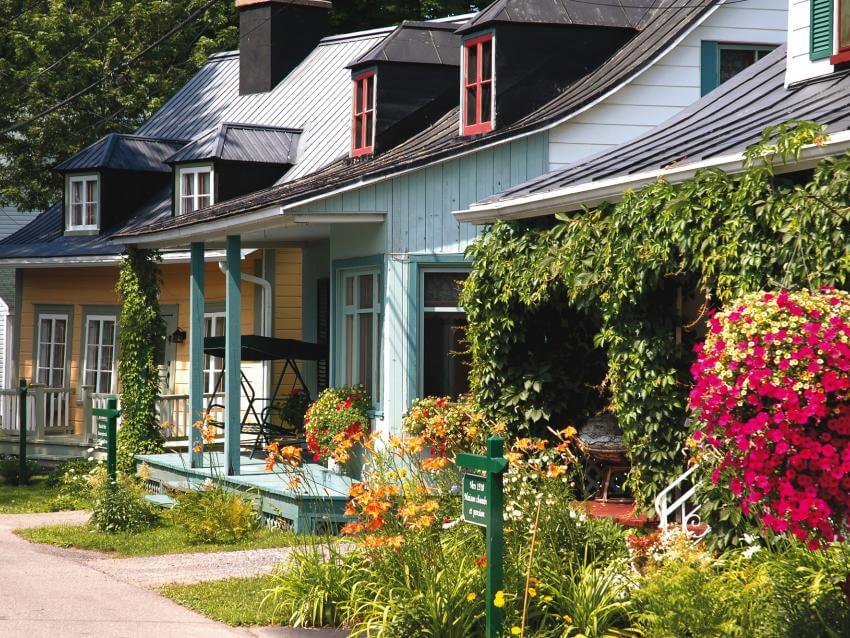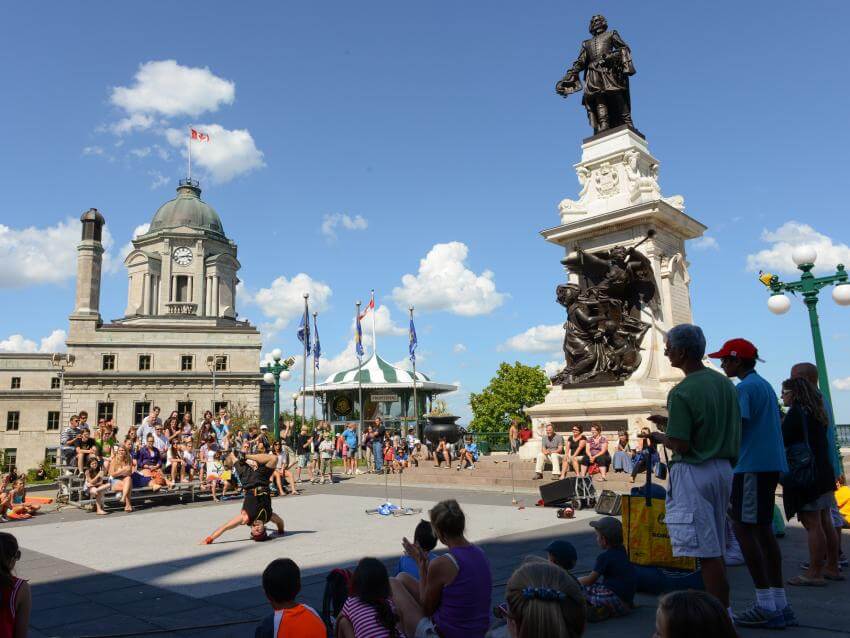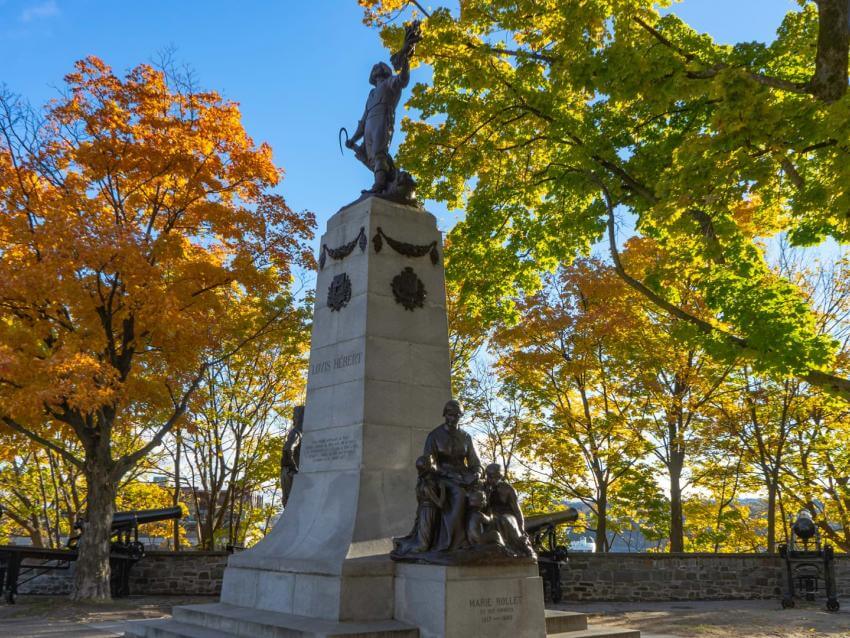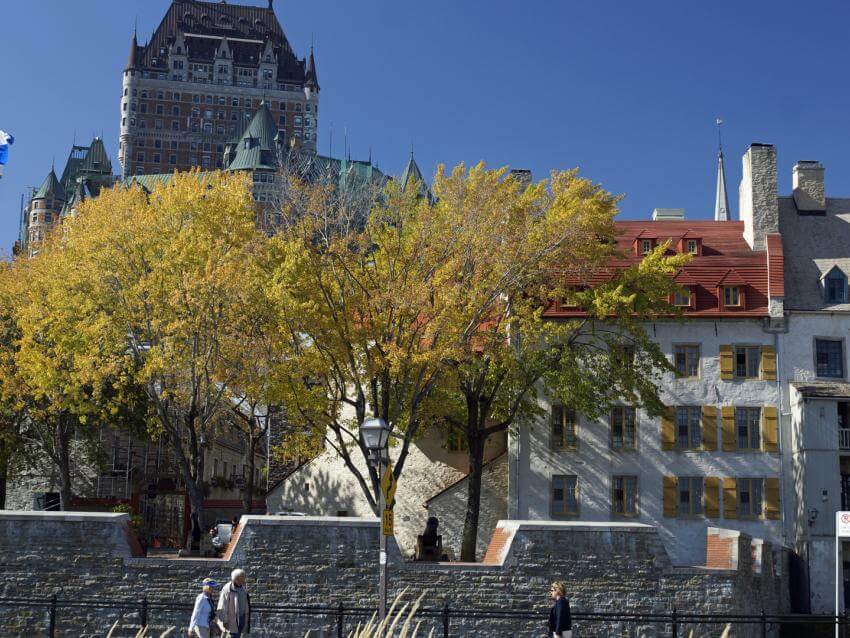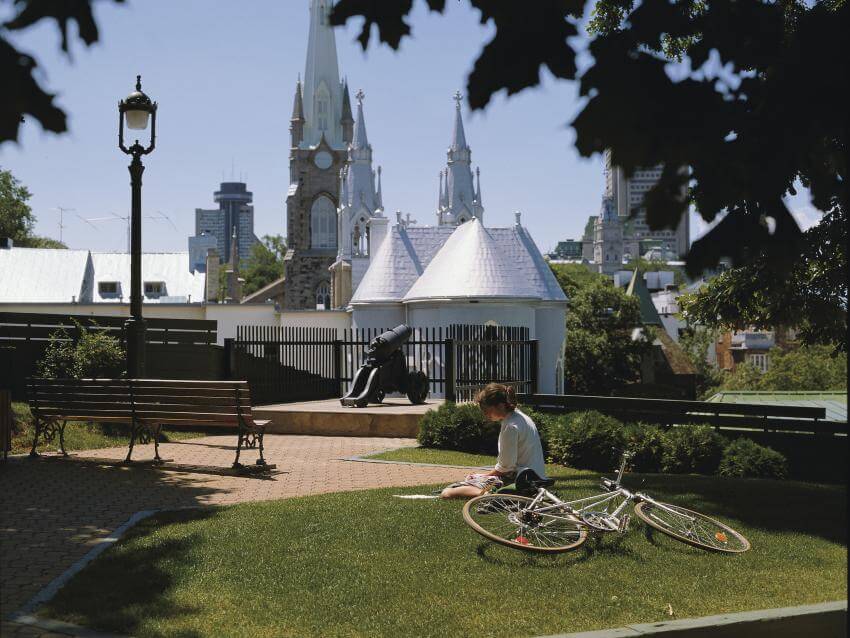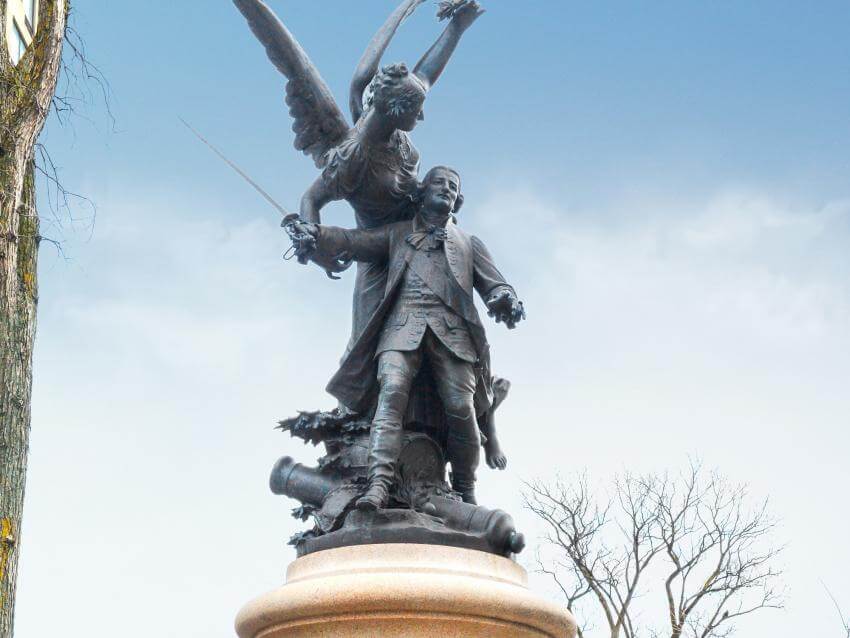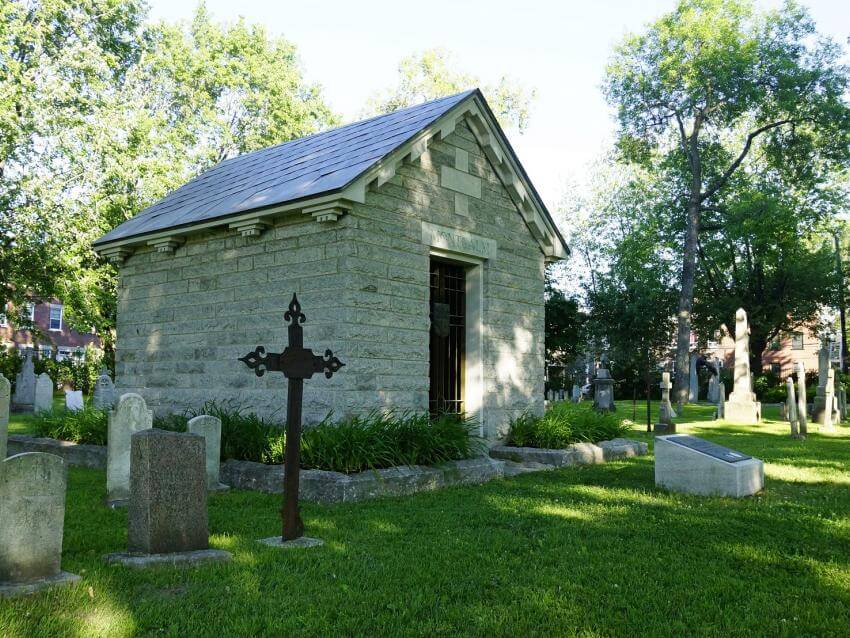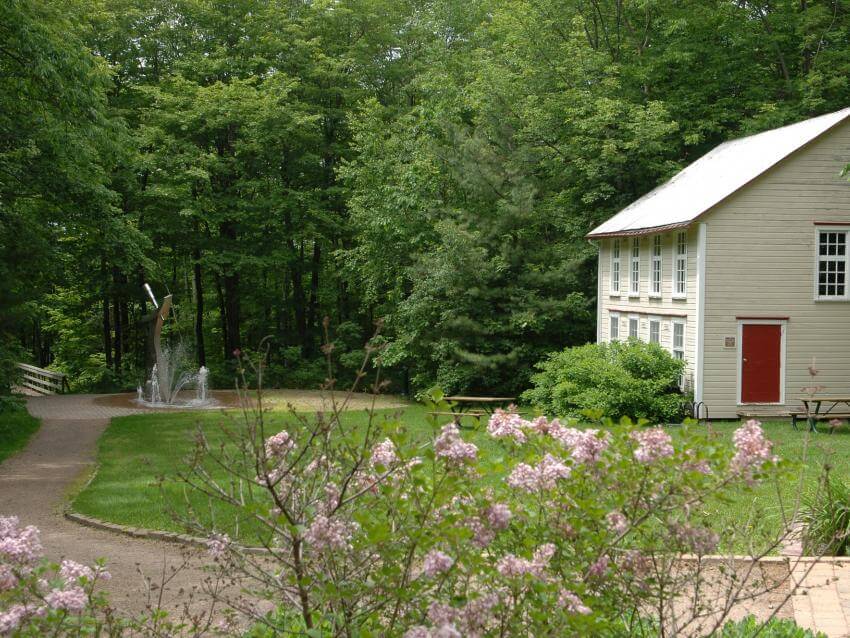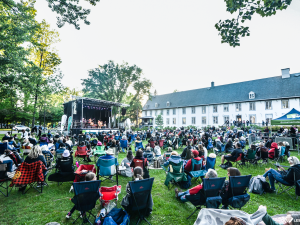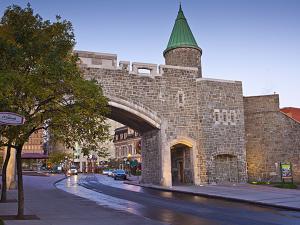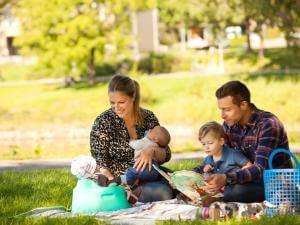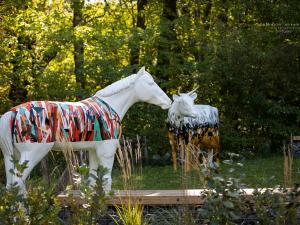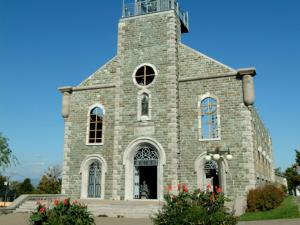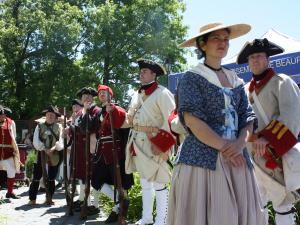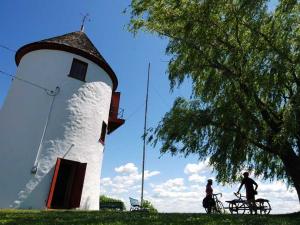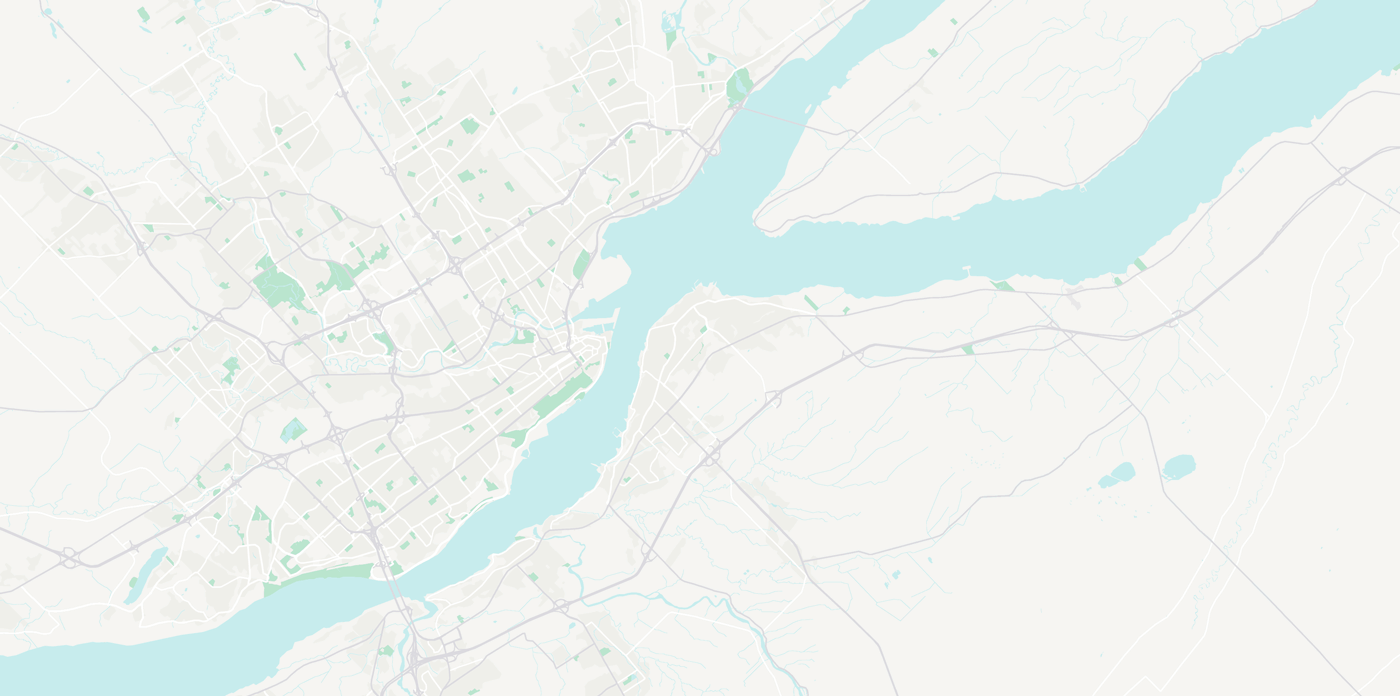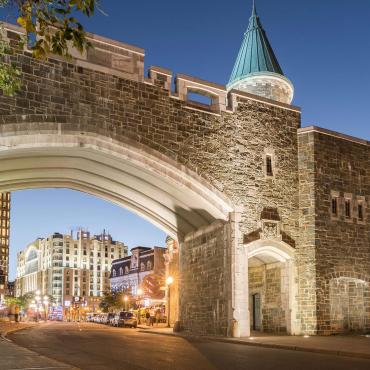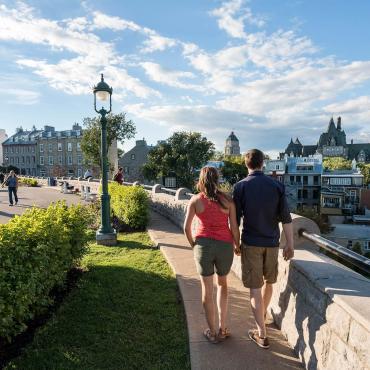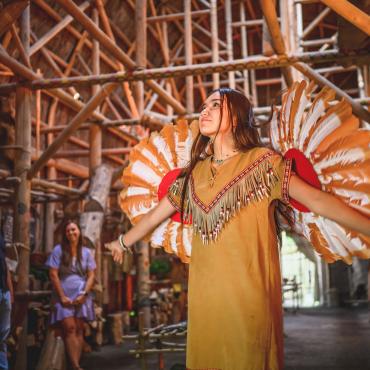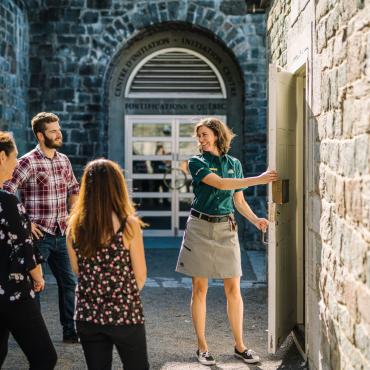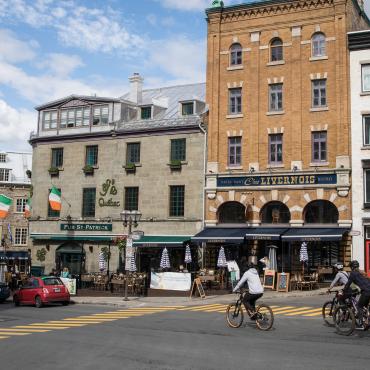18 Sites Witness to our French Heritage

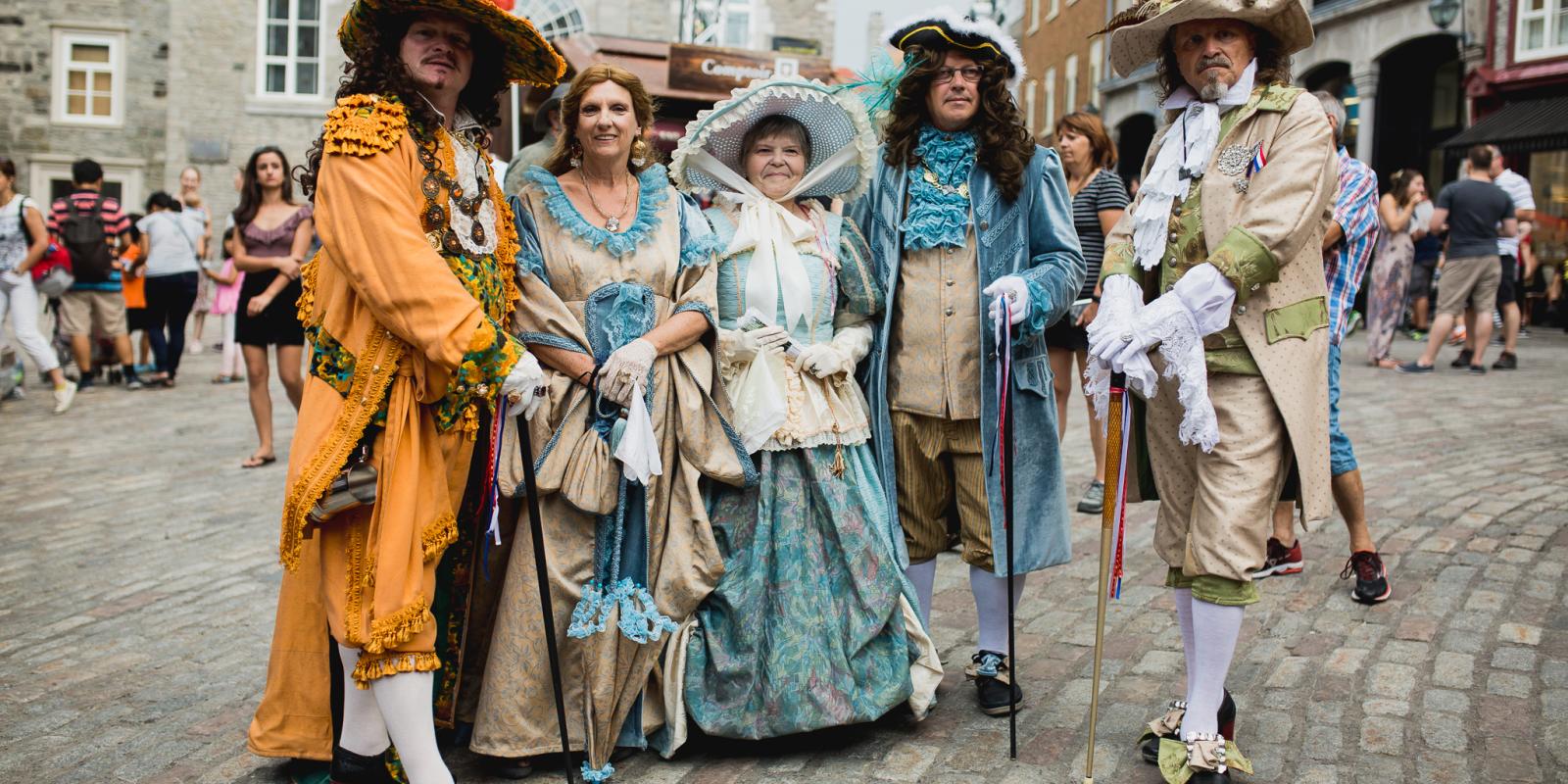
1608. Québec is founded by French explorer Samuel de Champlain, becoming the cradle of French civilization in North America. The Siege of Québec and the famous Battle of the Plains of Abraham later led to the fall of New France. For a more in-depth look at these pivotal events, check out our dedicated page on the history of Québec City.
The French Regime has left a lasting imprint on Québec’s culture, not least in the gift of what is still today and its principal language. Come explore this rich legacy!
- Attractions
Attractions
 Jeff Frenette Photography
Jeff Frenette Photography Place Royale, Francis Gagnon
Place Royale, Francis Gagnon
1Place Royale
Place Royale is the place where Samuel de Champlain founded Québec in 1608.
DONT'S MISS:
- The Samuel de Champlain Heritage Site and the place where he built his second “habitation,” marked out with darker paving stones
- Notre-Dame-des-Victoires Church and its Saint Geneviève chapel, whose tabernacle survived the siege of the city in 1759
- The architecture, with magnificent photo opportunities of buildings evocative of New France
 Musée des Ursulines de Québec
Musée des Ursulines de Québec
2The Québec Ursulines Convent
he Ursulines founded North America’s first school for girls here. They arrived at their current location in 1642.
DON'T MISS:
- The chapel furnishings, including one of the oldest ensembles of sculpted wood in the city
- Musée des Ursulines, displaying the treasures of the oldest religious teaching community in the country, such as liturgical ornaments embroidered in gold in the 17th and 18th centuries
- In summer, the magnificent garden, only recently opened to the public
 Notre-Dame de Québec Basilica-Cathedral, Étienne Dionne
Notre-Dame de Québec Basilica-Cathedral, Étienne Dionne
3Notre-Dame-de-Québec Basilica-Cathedral
Notre-Dame-de-Québec was built in 1647, leading in 1674 to the establishment of the first Roman Catholic parish north of the Spanish colonies.
DON'T MISS:
- The spectacular baldachin over the altar and tabernacle like a miniature version of the one in St. Peter’s Basilica, Rome
- The tomb of St. François de Laval, Québec’s first bishop, canonized in 2014
- The crypt and resting place of bishops, as well as 4 governors of New France
 Maison des Jésuites de Sillery
Maison des Jésuites de Sillery
4Maison des Jésuites de Sillery
The first permanent Jesuit establishment in the area, founded in 1637 in an effort to convert and settle the nomadic Algonquins and their allies.
DON'T MISS:
- The remains of the houses built in 1637 and 1660 for the St. Joseph Mission
- The remains of the first Aboriginal Roman Catholic cemetery in North America
 Parcs Canada
Parcs Canada
5The fortifications of the Old City
The walls and gates surrounding most of the Old City were built for defence by the French in the 17th and 18th centuries. Québec is the continent’s only remaining fortified city north of Mexico, for which it has been declared a UNESCO World Heritage Site.
DON'T MISS:
- The amazing views from the 4.6 km of walls that encircle the Old City
- The insights of Fortifications of Québec National Historic Site interpreters as they explain Québec’s defensive system
 Séminaire de Québec, Guy Lessard
Séminaire de Québec, Guy Lessard
6Séminaire de Québec
This first French-language university in the Americas was founded in 1852, taking over buildings occupied by a community of priests since 1663.
DON'T MISS:
- The self-guided tour with its a stop in the highly photogenic courtyard of the old seminary, dazzling by day or night
 Trait-Carré - Circuit piétonnier
Trait-Carré - Circuit piétonnier Moulin des Jésuites
Moulin des Jésuites
7Trait-Carré of Charlesbourg
Trait-Carré of Charlesbourg is known for its star-shaped layout, designed to group the houses and residents together for better protection against attacks from the Iroquois.
DON'T MISS:
- The Jesuits’ mill, built between 1733 and 1744 for residents to mill their grain
- The self-guided walking tour to explore this unusual form of street layout
 Archéo-Québec
Archéo-Québec L'îlot des Palais
L'îlot des Palais
8Îlot des Palais
Îlot des Palais is the site of the first brewery in New France as well as being the palace of the intendant (colonial administrator).
DON'T MISS:
- The largest French-Regime vaults in the city on public view, dating back to the 18th century
- The exhibition on local archaeological research presenting the history of the area from the 14th century to the present day
 Maison Drouin
Maison Drouin Sébastien Girard
Sébastien Girard Île d'Orléans, Camirand Photo
Île d'Orléans, Camirand Photo
9Île d’Orléans
The stopover point for about 300 French families, whose descendants today number over 100,000 throughout North America. Many of the island’s rural homes evoke the spirit of 18th century France.
DON'T MISS:
- Saint-Pierre Church, the oldest surviving church in Québec (1719)
- Maison Drouin dates to around 1730 and is the only typical Île d’Orléans habitant home that is open to the public
- Maison de nos Aïeux has a genealogy centre on Québec’s founding families
- The drive around the island with 4 of the “most beautiful villages of Québec”
 Route de la Nouvelle-France, Guy Lessard
Route de la Nouvelle-France, Guy Lessard Vegetable Cellar on Chemin du Roy, Guy Lessard
Vegetable Cellar on Chemin du Roy, Guy Lessard
10The New France Route
The New France Route is a tourism circuit running between Québec’s Old City and the Côte-de-Beaupré region, formerly used to bring supplies in from the country.
DON'T MISS:
- A large concentration of heritage houses along the 50 km route
- The many root cellars along Avenue Royale formerly used to store foodstuffs
 Chemin du Roy, Cap-Santé
Chemin du Roy, Cap-Santé Chemin du Roy, Yves Tessier
Chemin du Roy, Yves Tessier
11Chemin du Roy
The oldest driveable road in Canada, built in 1737 to link up Québec City, Trois-Rivières, and Montréal.
DON'T MISS:
- The wealth of the history and heritage of New France throughout the road’s 287 km length
- More of the province’s “most beautiful villages”, such as Neuville, Cap-Santé, and Deschambault-Grondines
- Monuments
Monuments
 Terrasse Dufferin, Ville de Québec
Terrasse Dufferin, Ville de Québec
12Champlain Monument
French explorer Samuel de Champlain founded Québec in 1608. The promontory of Cap Diamant and the narrower stretch of the St. Lawrence River made it a good place for settlement. The Champlain Monument is one of the city’s most spectacular monument because of its size and dramatic setting.
 Pamela MacNaughtan
Pamela MacNaughtan
13Louis Hébert Monument
Louis Hébert and his family were the first arrivals to farm the land in New France. The monument commemorates the first colonists to come to Québec in 1617.
 Audrée Veillette
Audrée Veillette
14Royal Battery
Governor Frontenac built this gun battery in 1691, facing the river so that soldiers could defend against threats from ships on the St. Lawrence River. The “Royal” part of its name honours Louis XIV. It saw action during the celebrated battle of 1759.
 Parc du Cavalier-du-Moulin, Yves Tessier
Parc du Cavalier-du-Moulin, Yves Tessier
15Parc du Cavalier-du-Moulin
This charming oasis in the heart of the Old City is all that remains of a former French defensive structure. In 1663 it was home to a windmill, which became part of Québec’s first fortifications.
 Monument Montcalm, Ville de Québec
Monument Montcalm, Ville de Québec
16The Montcalm Monument
Louis-Joseph de Montcalm led the French troops in the Battle of the Plains of Abraham in 1759. He is depicted being held up by the Angel of Glory, who crowns him with laurels after he receives his mortal wound.
 Montcalm Mausoleum, Guy Lessard
Montcalm Mausoleum, Guy Lessard
17The Montcalm Mausoleum
Louis-Joseph de Montcalm’s body was first kept in the Ursulines Chapel before being transferred to the cemetery of Hôpital général de Québec. Montcalm’s name is inscribed above the mausoleum entrance.
 Cartier-Roberval Archaeological site, Ville de Québec
Cartier-Roberval Archaeological site, Ville de Québec
18Cartier-Roberval Archaeological Site
This site of extensive archaeological excavations bears witness to North America’s first French colony, established by Jacques Cartier and Jean-François de La Rocque de Roberval in 1541. Impressive vegetation and wildlife make it a nature park along with the interpretive panels exploring and explaining the history of the site.
